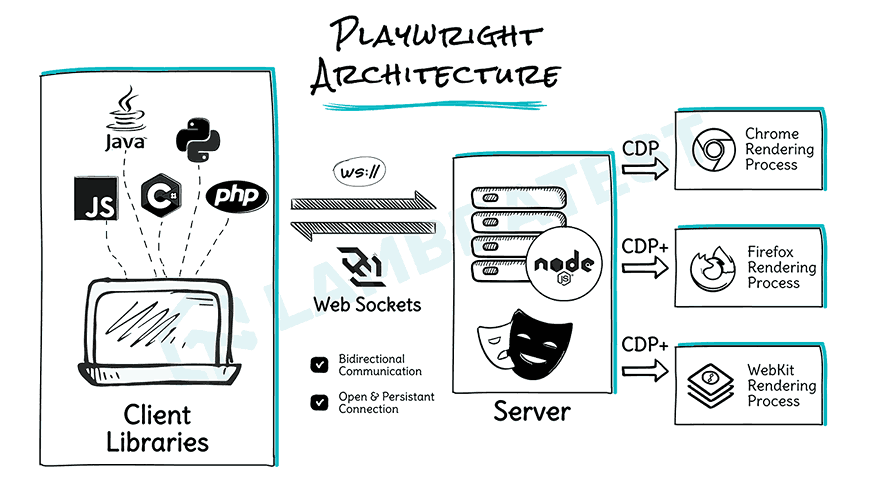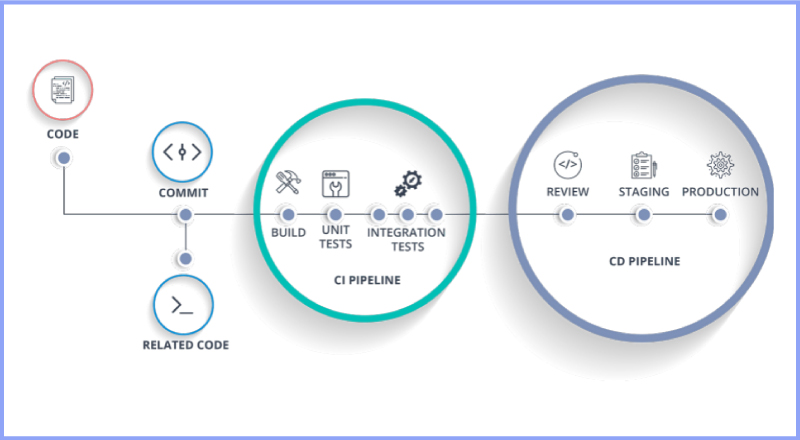In the fast-paced world of web development, ensuring application quality and reliability is paramount. End-to-end (E2E) testing has evolved from a cumbersome, final-stage process to an integral part of the CI/CD pipeline. At the forefront of this evolution is Playwright, Microsoft’s open-source framework that has rapidly gained popularity for its power, speed, and developer-friendly features. It provides a single API to automate Chromium, Firefox, and WebKit, enabling true cross-browser testing on any platform.
As the web ecosystem advances, with constant updates in frameworks and tools—from React News and Vue.js News to the latest in Node.js News—the testing tools that support them must also innovate. This article delves into the latest developments surrounding Playwright, exploring its core strengths, powerful integrations with the modern tech stack, and advanced techniques that empower developers to write more resilient and efficient tests. Whether you’re comparing it with alternatives discussed in Cypress News or looking to migrate from Puppeteer, understanding the latest Playwright News is crucial for staying ahead in web automation.
The Evolution of Playwright: Core Features and Recent Enhancements
Playwright’s design philosophy centers on eliminating the flakiness and complexity often associated with E2E testing. Its architecture and rich feature set are built to handle the dynamic nature of modern web applications, providing a stable and reliable automation experience.
Understanding Playwright’s Robust Architecture
At its core, Playwright operates out-of-process, communicating with browsers over the WebSocket protocol. This architecture prevents the test script from running in the same process as the browser, leading to more stable and crash-resistant tests. A key feature that sets Playwright apart is its auto-waiting mechanism. Unlike older tools that often require manual waits and sleeps, Playwright automatically waits for elements to be actionable (e.g., visible, stable, and enabled) before performing any action. This single feature drastically reduces test flakiness and simplifies test code.
The framework’s object model is intuitive: a Browser instance can have multiple independent BrowserContexts (akin to incognito profiles), and each context can have multiple Pages. This allows for powerful parallelization and the simulation of complex multi-user scenarios within a single test run.
What’s New? Key Updates in Recent Releases
The Playwright team consistently releases updates that enhance the developer experience. Recent trends in Playwright News have focused on improving debugging and test authoring. The UI Mode, for example, provides a time-traveling debugger with a watch mode, allowing developers to see their tests execute in real-time and step through each action. Another significant enhancement is the continued improvement of the Trace Viewer, which now provides even more detailed performance metrics, network logs, and a DOM snapshot for every step, making post-mortem debugging incredibly efficient. Here is a basic example of a Playwright test written in TypeScript, showcasing its clean syntax.
// tests/example.spec.ts
import { test, expect } from '@playwright/test';
test('has title', async ({ page }) => {
await page.goto('https://playwright.dev/');
// Expect a title "to contain" a substring.
await expect(page).toHaveTitle(/Playwright/);
});
test('get started link', async ({ page }) => {
await page.goto('https://playwright.dev/');
// Click the get started link.
await page.getByRole('link', { name: 'Get started' }).click();
// Expects the URL to contain intro.
await expect(page).toHaveURL(/.*intro/);
});This simple script demonstrates the power of Playwright’s locators (getByRole) and assertions (toHaveTitle), which are both readable and resilient to minor UI changes.
Deep Dive into Integrations: Connecting Playwright with Your Ecosystem

A tool’s true power is often measured by how well it integrates with the existing development ecosystem. Playwright excels in this area, offering seamless connections to test runners, reporting tools, and CI/CD platforms. This flexibility is crucial in an environment where developers are constantly evaluating the latest Vite News or Webpack News for their build pipelines.
Test Runners and Frameworks
Playwright ships with its own powerful test runner, @playwright/test, which is built from the ground up for E2E testing. It includes features like parallel execution out-of-the-box, test fixtures for managing state, automatic retries for flaky tests, and rich configuration options. While @playwright/test is highly recommended, Playwright can also be used as a library with other test runners. For teams already invested in frameworks covered in Jest News or the rapidly evolving Vitest News, Playwright’s core library can be integrated, although some of the magic of the built-in runner might be lost.
Reporting and Test Management Integrations
Visibility into test results is critical for QA and development teams. Playwright’s configuration makes it trivial to add various reporters to format and distribute test outcomes. By default, it includes a list reporter for the console and a fantastic HTML reporter that generates a self-contained website with detailed results, traces, and screenshots for each test. Furthermore, its extensibility allows for integration with popular test management platforms like Allure, TestRail, and ReportPortal. This enables teams to aggregate results, track test history over time, and gain high-level insights into application quality. Configuring these reporters is done directly in the playwright.config.ts file.
// playwright.config.ts
import { defineConfig, devices } from '@playwright/test';
export default defineConfig({
testDir: './tests',
/* Run tests in files in parallel */
fullyParallel: true,
/* Fail the build on CI if you accidentally left test.only in the source code. */
forbidOnly: !!process.env.CI,
/* Retry on CI only */
retries: process.env.CI ? 2 : 0,
/* Opt out of parallel tests on CI. */
workers: process.env.CI ? 1 : undefined,
/* Reporter to use. See https://playwright.dev/docs/test-reporters */
reporter: [
['list'], // Default console reporter
['html', { open: 'never' }], // Generate an HTML report after the run
['json', { outputFile: 'test-results.json' }] // For custom processing
],
use: {
/* Base URL to use in actions like `await page.goto('/')`. */
baseURL: 'http://127.0.0.1:3000',
/* Collect trace when retrying the failed test. See https://playwright.dev/docs/trace-viewer */
trace: 'on-first-retry',
},
/* Configure projects for major browsers */
projects: [
{
name: 'chromium',
use: { ...devices['Desktop Chrome'] },
},
{
name: 'firefox',
use: { ...devices['Desktop Firefox'] },
},
],
});This configuration showcases how to enable multiple reporters, set up parallel execution, and configure browser projects, making it a central hub for controlling your testing strategy.
Advanced Playwright Techniques for Complex Scenarios
Beyond basic page navigation and assertions, Playwright offers a suite of advanced features for tackling complex real-world testing challenges. Mastering these techniques can dramatically improve the speed, stability, and scope of your test suite, especially when testing applications built with modern frameworks like those featured in Angular News or Svelte News.
Mastering Authentication and State Management
One of the most time-consuming parts of any E2E test is the login process. Repeating login steps for every single test is inefficient and slow. Playwright solves this with its `storageState` feature. You can create a global setup script that logs in once, saves the browser’s state (cookies, local storage, session storage) to a JSON file, and then configures all subsequent tests to start with that authenticated state. This isolates the login logic and makes your tests run significantly faster.
// global-setup.ts
import { chromium, FullConfig } from '@playwright/test';
async function globalSetup(config: FullConfig) {
const browser = await chromium.launch();
const page = await browser.newPage();
// Perform login steps
await page.goto('https://example.com/login');
await page.getByLabel('Username').fill('myuser');
await page.getByLabel('Password').fill('mypassword');
await page.getByRole('button', { name: 'Log in' }).click();
// Wait for the main page to load after login
await page.waitForURL('https://example.com/dashboard');
// Save the authenticated state to a file
await page.context().storageState({ path: 'storageState.json' });
await browser.close();
}
export default globalSetup;
// In playwright.config.ts, add:
// globalSetup: require.resolve('./global-setup.ts'),
// and in the `use` section:
// use: {
// storageState: 'storageState.json',
// }This setup ensures that every test worker starts in a logged-in state, bypassing the UI login flow entirely for the actual tests.

Network Interception and Mocking
Modern web applications are heavily reliant on APIs. Testing how a UI behaves under different network conditions (e.g., slow responses, error states) can be difficult. Playwright’s network interception capabilities, primarily through the `page.route()` method, give you full control over network traffic. You can intercept API requests, modify them, or provide mock responses directly from your test code. This is invaluable for creating stable tests that don’t depend on a live backend, and for testing edge cases like 500 server errors without having to manipulate the backend. This is particularly useful for teams following the latest Next.js News or NestJS News, allowing front-end and back-end testing to be decoupled.
// tests/api-mocking.spec.ts
import { test, expect } from '@playwright/test';
test('should display mocked user data', async ({ page }) => {
// Intercept the API call to /api/users
await page.route('**/api/users', async route => {
const json = [{ id: 1, name: 'John Doe' }, { id: 2, name: 'Jane Smith' }];
// Fulfill the request with a mock response
await route.fulfill({ json });
});
await page.goto('/users');
// The page will now render the mocked data instead of hitting the real API
await expect(page.getByText('John Doe')).toBeVisible();
await expect(page.getByText('Jane Smith')).toBeVisible();
});Best Practices and Performance Optimization
Writing effective tests is as much an art as it is a science. Following best practices ensures your test suite remains maintainable, reliable, and fast as your application grows.
Writing Resilient Selectors
The number one cause of flaky tests is brittle selectors. Avoid relying on auto-generated CSS classes or complex XPath that can change with any minor refactoring. Instead, Playwright strongly encourages using user-facing locators. Methods like getByRole, getByText, getByLabel, and getByTestId create tests that are coupled to the user experience, not the implementation details. This makes your tests more resilient to code changes and easier to understand.

Leveraging Parallelization and Sharding
To keep your CI/CD pipeline fast, run your tests in parallel. Playwright’s test runner is designed for this and will run your test files across multiple worker processes by default. You can configure the number of workers in `playwright.config.ts`. For very large test suites, you can go a step further and use sharding, which splits the test suite across multiple machines, allowing for massive parallelization and dramatically reducing total execution time.
Effective Debugging with Trace Viewer and UI Mode
When a test fails, quick and effective debugging is essential. Always leverage the Playwright Trace Viewer. By setting `trace: ‘on-first-retry’` in your config, you get a complete trace for any test that fails, including a DOM snapshot timeline, console logs, and network requests. For local development, the `playwright test –ui` command launches a powerful UI Mode that allows you to watch, re-run, and inspect tests interactively, which is a huge productivity booster. Pairing these tools with good practices from the TypeScript News and ESLint News communities for writing clean code will result in a highly effective testing workflow.
Conclusion
Playwright continues to solidify its position as a top-tier solution for modern web automation. Its robust architecture, developer-centric features, and constant innovation make it an indispensable tool for teams committed to quality. By leveraging its core features like auto-waiting, embracing its powerful integration capabilities with reporting and CI/CD tools, and mastering advanced techniques like authentication management and network mocking, you can build a testing strategy that is both comprehensive and efficient.
The latest Playwright News reflects a clear trend towards a more integrated and debuggable testing experience. As you move forward, explore the official documentation, experiment with the Trace Viewer and UI Mode, and focus on writing resilient, user-centric tests. By doing so, you’ll not only catch bugs earlier but also contribute to a more stable and reliable product for your users.

